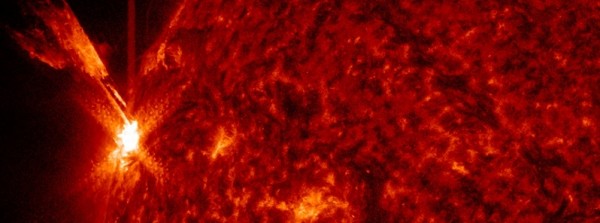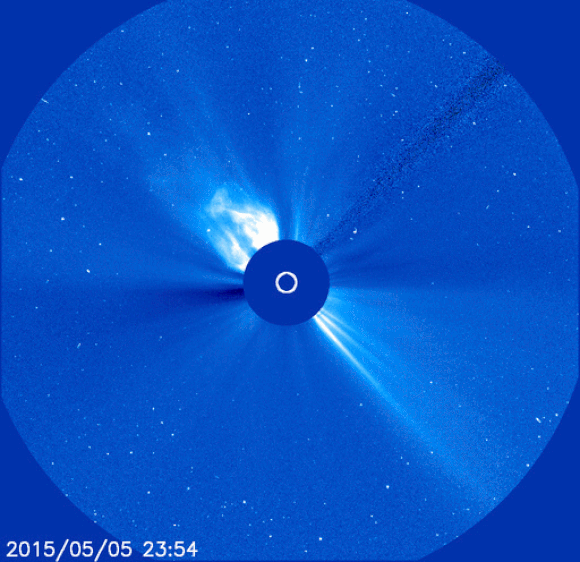
After a period of few to no sunspots, and relative quiescence, the sun released an intense X2-class solar flare yesterday evening (May 5, 2015). The flare began at 22:05 UTC (5:05 p.m. CDT) and ended at 22:15 UTC. This sunspot region – formerly called Region 2322 – is only now coming around to the side of the sun facing Earth. Spaceweather.com reported:
A pulse of UV radiation and X-rays from the flare caused a strong radio blackout over the Pacific side of Earth (see map) … which affected frequencies below 20 MHz. Mariners, aviators, and ham radio operators are the type of people who might have noticed the disturbance.
In addition, the flare produced a two-minute radio burst, heard as a roar of static from shortwave receivers on Pacific isles and western parts of North America. Amateur radio astronomer Thomas Ashcraft of New Mexico recorded the outburst, which you can hear here. A radio burst of this kind is generally short-lived, but can cause interference for radar, GPS, and satellite communications.
Enjoying EarthSky so far? Sign up for our free daily newsletter today!

Bottom line: An X2-class solar flare erupted on May 5, 2015 at at 22:05 UTC (5:05 p.m. CDT) and ended at 22:15 UTC. The flare created a pulse of UV radiation and X-rays that caused a strong radio blackout over the Pacific. It also caused a short-lived radio burst, heard as static on shortwave receivers.











